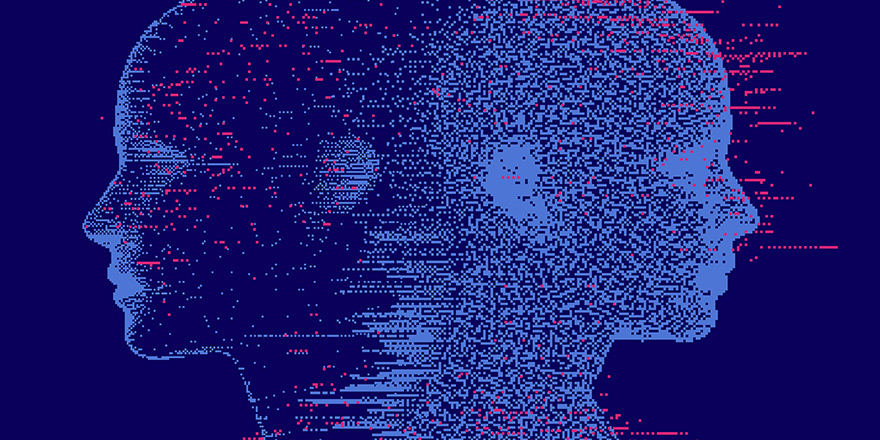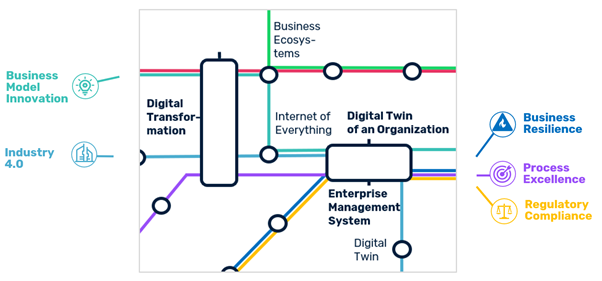Use a digital twin to navigate transformation
Read how using a digital twin can navigate transformation & how it overlaps with business transformation & operational excellence on our trend map.

Digitally transforming your organization can be fraught with complexities and roadblocks, so you need a kind of “navigator” to help with the journey.
One of Gartner’s recommendations is to create a digital twin of your organization (DTO) to assist in the navigation. “Without some sort of a “navigator,” the risk of failure increases dramatically as the scope and pace of the digital business initiative expands.”
In our trend map, Business Transformation & Operational Excellence, you can where the digital twin concept overlaps with business transformation and operational excellence.

Industry 4.0 and the Internet of Things (IoT) have recognized the concept and metaphor of an “IoT digital twin” for some time (attributed to Michael Grieves in 2002). It refers to a digital representation of physical assets, systems and devices (wind turbines, aircrafts, power plants, smartphones, etc.).
In industry, this is used to plan, test and optimize systems, but also to train employees in their use. In production, a digital twin can also be linked to real-time information for a holistic view of the system. Typical applications include asset monitoring, predictive maintenance and virtual simulations to optimize system performance by changing parameters (such as temperatures, pressure or energy consumption).
This concept has been applied to organizational units, companies, departments and even cities and countries – for example; there is a digital twin of Singapore.
Enterprise management system meets DTO
An enterprise management system (EMS) is often used synonymously. The digital twin of an organization is the basis for a holistic approach that allows various scenarios for change to be run through before being implemented.
According to estimates by the market research institute IDC, digital transformation spending will have reached $2.3 trillion by 2023. Against this backdrop, a DTO also is central for planning successful changes on a strategic and operational level in a company.
What are the characteristics of a DTO/EMS and what is it used for? A DTO is a software-based representation of an organization. It includes knowledge of the key interdependencies between the business assets (products, business operations, resources, etc.) and is supplied with operational data and contextual information. Often the analogy to a navigation system is used, which allows to run through different routes on the way to a destination (fastest way, without tolls, etc.).
The scope of a DTO can be, for example, a single business process (like procurement), an entire supply chain including dependencies on suppliers and distribution partners, or the entire company, including its business ecosystem.
Business process excellence
Within the trend map, the DTO / EMS concept is important for strategic transformations, business model innovation, and operational optimization (business process excellence). For example, a virtual map of a supply chain can provide end-to-end transparency so that all stakeholders know exactly where a delivery is, which route it has taken, and when it will arrive at its destination.
When problems arise, the digital twin can be used to run through solution scenarios. Business resilience has currently taken on a prominent importance against the backdrop of Covid-19 and at-risk global supply chains. Current security and regulatory requirements can also be integrated into a DTO for regulatory compliance.
In summary, the digital twin is a central concept of Industry 4.0. It is now also becoming a key concept for creating a virtual representation of a company as part of an ecosystem, to plan and run scenarios for successful transformation and operational excellence.
Download the e-book with the detailed trend map by clicking below.